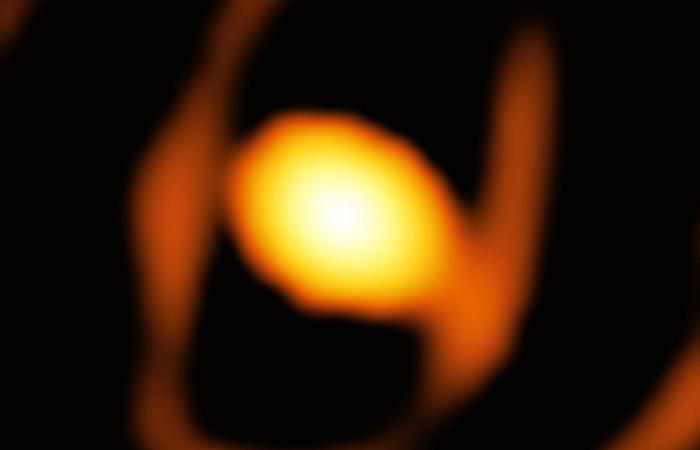Astronomers in Chile say they have captured the first close-up image of a star outside our galaxy.
“For the first time, we have succeeded in taking a zoomed-in image of a dying star in a galaxy outside our own Milky Way,” Keiichi Ohnaka, an astrophysicist from Universidad Andrés Bello in Chile, .
Located 160,000 light years away from Earth, the star — WOH G64 — was photographed by the European Southern Observatory’s Very Large Telescope Interferometer (ESO’s VLTI) as it was puffing out gas and dust, known to be one of the last stages of a dying star’s life before it becomes a supernova, Ohnaka said.
“We discovered an egg-shaped cocoon closely surrounding the star,” Ohnaka said. “We are excited because this may be related to the drastic ejection of material from the dying star before a supernova explosion.”
A corresponding study authored by Ohnaka was published Thursday in the journal Astronomy & Astrophysics.
Astronomers have previously captured within the Milky Way, but Ohnaka’s image represents the first time a star beyond our galaxy has been photographed with a similar level of detail.
Classified as a red supergiant, WOH G64 is about 2,000 times larger than the Sun, and Ohnaka’s team “had long been interested in this behemoth star,” according to a press release announcing their findings.
In 2005 and 2007, they used the same telescope in Chile’s Atacama Desert in an attempt to learn more about it, but “an actual image of the star had remained elusive.”
Comparing the new image to previous attempts, researchers noticed that the star has become dimmer over the past decade.
“We have found that the star has been experiencing a significant change in the last 10 years, providing us with a rare opportunity to witness a star’s life in real time,” Gerd Weigelt, an astronomy professor at the Max Planck Institute for Radio Astronomy in Bonn, Germany, and a co-author of the study, said in a statement.
Ohnaka’s team hopes to capture more images of the dimming star for further study.






